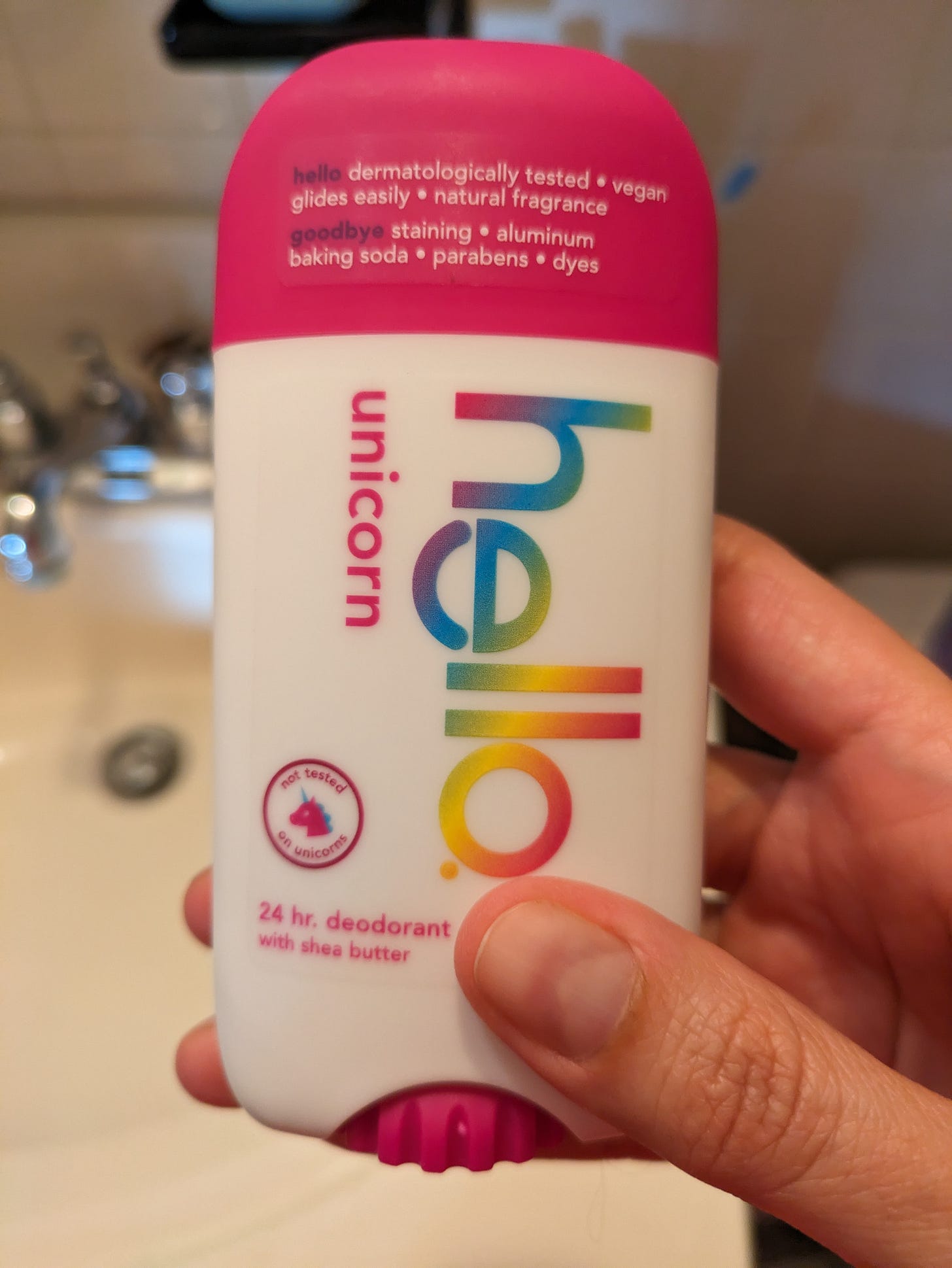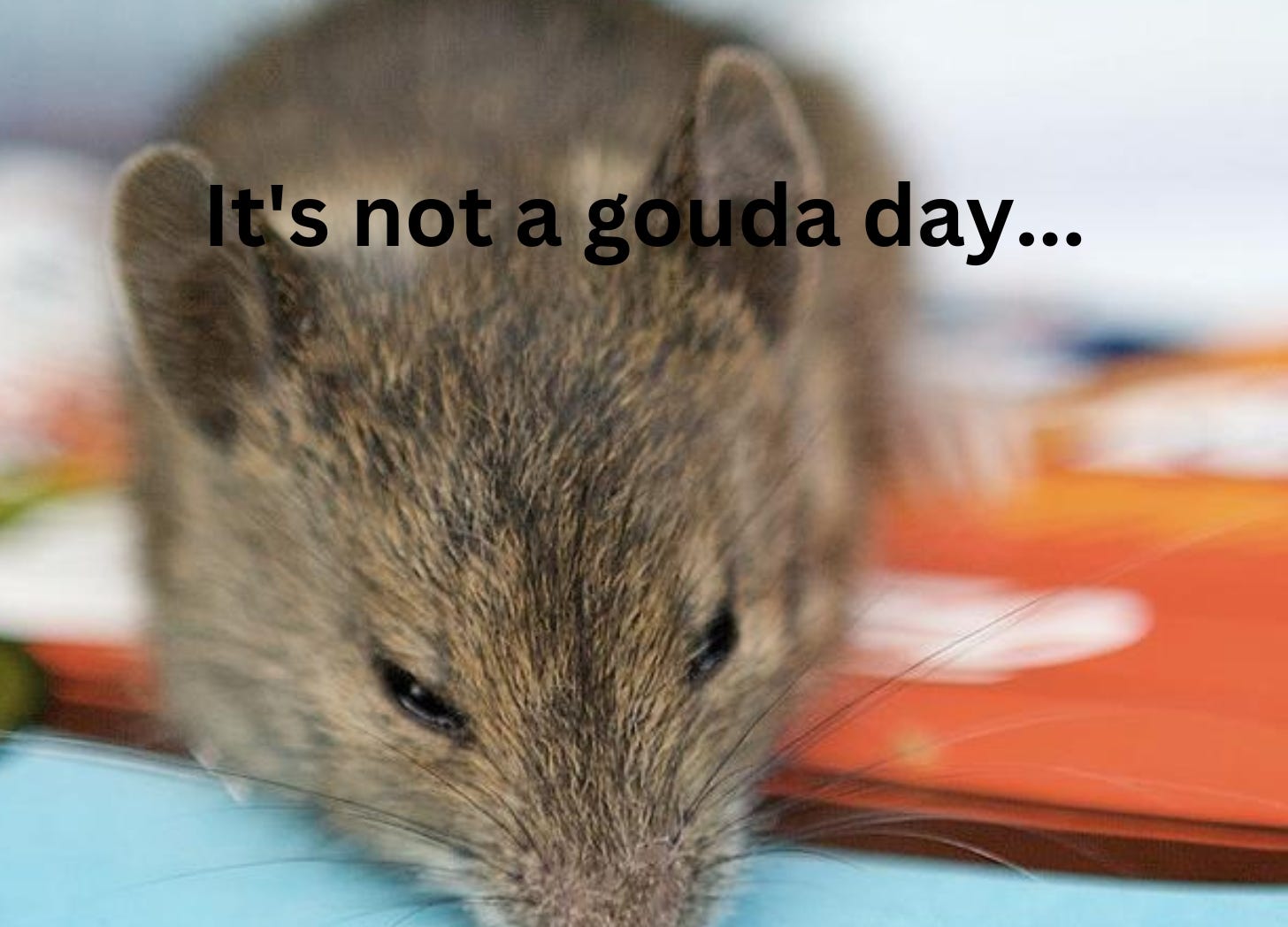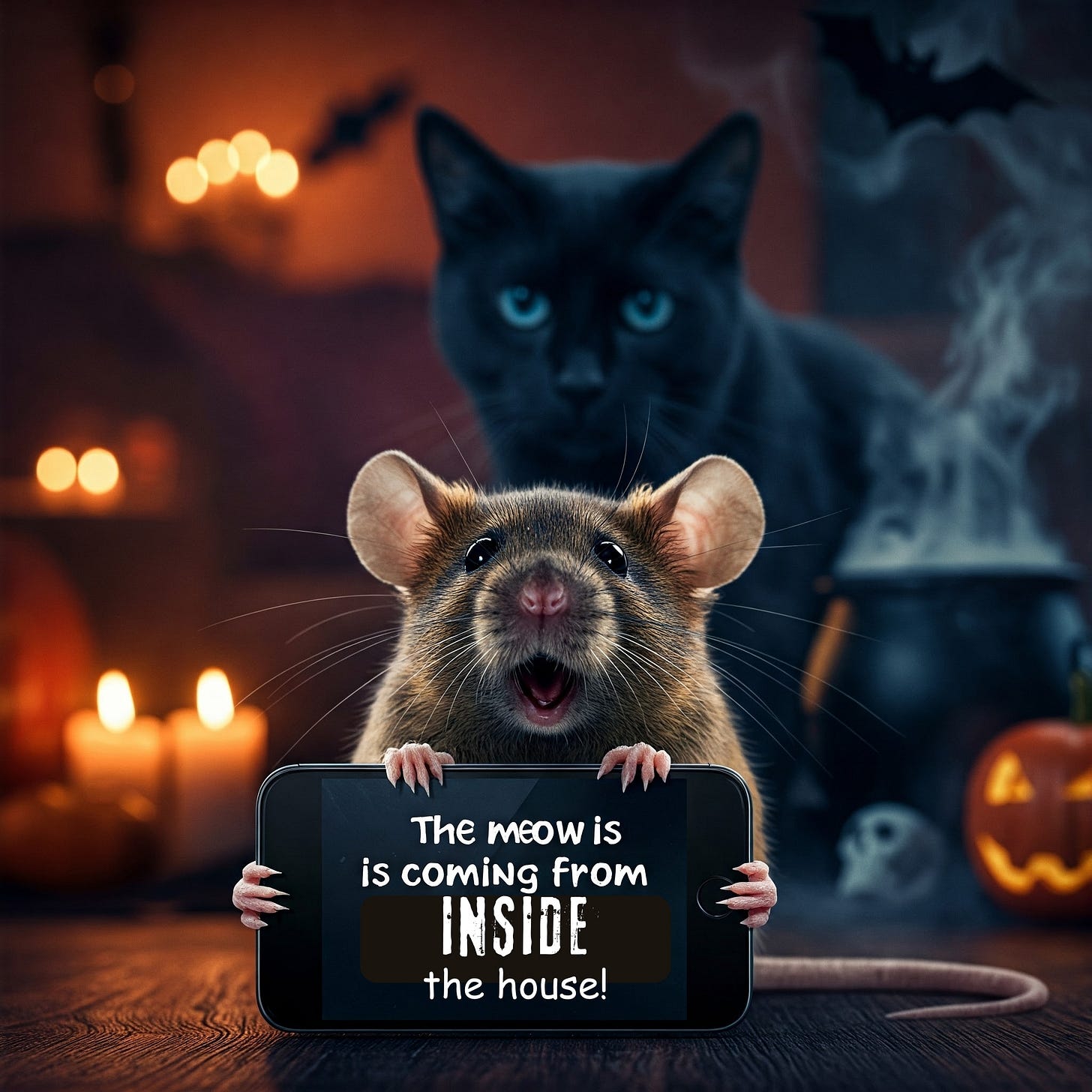Welcome back to Of Mice & Mental Health, a newsletter demystifying and reimagining mental health for a calmer, more joyful life. And mice memes.
If you enjoy reading, please consider supporting my writing by subscribing for free, liking this post, donating, or sharing with friends.
Last year, when my foster daughter lived with us, we had several conversations about suicide. It wasn’t something I’d planned.
My daughter—let’s call her Zoe—was a teenager, so I knew we’d be talking a lot about difficult topics like periods, sex, relationships, and the importance of wearing deodorant. (We found this fun unicorn one!) Suicide wasn’t on the list, though I was relieved she trusted me enough to tell me.
From the day she moved in, Zoe spent a lot of time listening to her “Sad Songs” playlist, often crying or burying her face in a pillow—that is, when she wasn’t watching SpongeBob or making proclamations about her dating life. “I can’t be single forever,” she’d say, rolling her eyes.
She became more visibly upset over time, acknowledging her depression, anxiety, and stress. When Zoe shared these things, I told her I felt that way too sometimes, and when I did feel sad enough to cry, I didn’t hide those emotions or my tears. I’m not saying I was bawling in front of her all the time, but she definitely knew I struggled with depression too.
I think that’s why Zoe trusted me enough to one day tell me how deep her sadness had gotten, how she didn’t like her life anymore and was “done” with it. I admit hearing this was terrifying. Even though I work in the mental health field and have plenty of training and experience in supporting people with suicidal thoughts, it hit me different coming from Zoe. And it took everything in me to quiet the parade of pint-sized psychiatrists marching through my brain.
In the US, young people ages 10-24 account for 15% of all suicides, the second leading cause of death for this age group (CDC).
I’m glad we had the opportunity to talk about this, and now I plan to talk about it with our next foster kids too. I think all parents (and schools!) need to have multiple discussions about suicide, big emotions, mental health, grief and loss, and any socioemotional issues, just like they do bullying, drugs, and sex. We don’t have only a single conversation with children about not eating their boogers or why on Halloween mommy needs to test all the KitKats, so why treat life’s most important topics any differently?
The more we bring up things like suicidal thoughts, the more we normalize them, and given the world we live in, aren’t they a natural response? Even just the thought of going through puberty again would make me think of killing myself, never mind doing it in today’s society where everyone stares at their phone instead of interacting and dogs in ballroom gowns are millionaires featured in Vogue as global fashion icons. Kidding aside, if talking about suicide feels scary or even a little bit uncomfortable, your child is not going to tell you when those thoughts come up. Make them feel safe to speak up.
How do you address mental health in your family?
If you’re looking for guidance on how to talk to someone with suicidal thoughts, I’d recommend this article I wrote for Slate about exactly that. I’m happy to answer questions in the comments too.
If you’re a young adult thinking of suicide and want a confidential, judgment-free place to discuss those thoughts (without being reported!), the Wildflower Alliance is starting an Alternatives to Suicide (Alt2Su) group specifically for people ages 13-18. You’ll find it listed here soon. There’s also a youth Alt2Su group that already takes place on Zoom through Heart & Soul, Inc. 11:30am-1pm PACIFIC time every third Saturday of the month.
If you know anyone who might find this information helpful, I really hope you share it.
And if you read this far, you deserve some cheese.









This is an important message that every parent should read.
Even if parents are not experiencing these feelings themselves, being open with their children and discussing vulnerability can make a significant difference.
We often feel pressured to be the hero, the role model, or the strong figure our children look up to. While this image can be positive and serve as a great example for our kids, it may also prevent them from learning how to handle their own emotions.
If children only see strong parents who never share their struggles, they may not understand that it's normal to face challenges. This lack of communication can lead them to a dark place, often without our awareness.
Additionally, children might feel compelled to wear a mask, pretending that everything is fine, which I can personally relate to. This facade can persist until it becomes too late to address the underlying issues.
So, parents, please engage in heart-to-heart conversations with your children. It's okay for them to have feelings, but it's even more important for us to discuss those feelings so that we can ensure they don't end up controlling us.
Important post. I feel that talking about suicide will always feel uncomfortable. However it’s ok to be ok with uncomfortable and talk this stuff through anyway